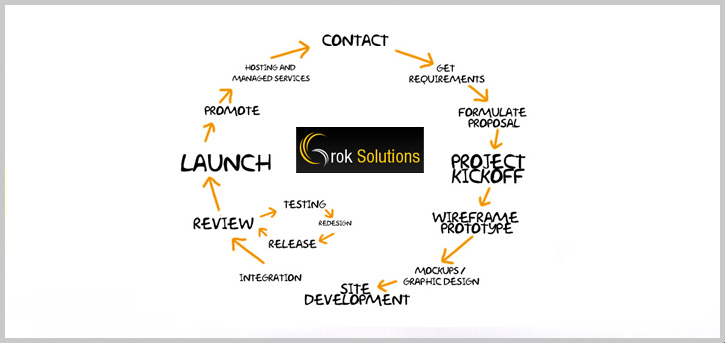Our Methodology For Developing Websites
Developing Web requires a focus on meeting user needs. To accomplish this, our methodology involves six elements and these six continuously ongoing processes :
- Planning: define target audience, purpose, objectives and policies for website development and use
- Analysis: check technical construction of web with validation tools, evaluate information consistency and verify correctness of domain information.
- Design: separate information into page-sized chunks, connect pages along routes of use and user thinking; provide information, context, and navigation cues; create a consistent look and feel.
- Implementation: create an extendible directory and file structure, use HTML tools where helpful, use templates for supporting consistent look and feel, check implementation in various browsers.
- Promotion: target publicity releases for general Web audiences, potential users, and current users; follow online community norms and practices, innovatively connect with users to meet their needs
- Innovation: continuously and creatively work for improvement to meet user needs; use testing, evaluation, and focus groups to shift and change web's content as user needs change.
- Our Engineers well trained complete SLDC (Software Development Life Cycle) Process.
- 100% flexible, with-in time frame, commitment & very sincere in Work.
- Your Satisfaction is our first Priority
Discussion
Planning : The process of choosing among competing opportunities for communication so that overall goals for the web can be set. These goals include anticipating and deciding on targets for the audience, purpose, and objectives for the information. Planning also is done for domain information through a process of defining and specifying the supporting information that must be collected, how it will be collected, and how the information will be updated. A web planner anticipates the skills called for by the web specification as well as the skills needed for constructing particular parts of a web. If a specification for a design calls for using a forms interface (a feature supported by HTML). The web planner also anticipates other resources needed to support the operation and development of the web. If user access statistics will be gathered, for example, the plan for the web must account for the need to procure and install a web statistics program.
Analysis : A process of gathering and comparing information about the web and its operation in order to improve the web's overall quality. An important operation is one in which a web analyst examines information gathered about the audience for its relevance to some other elements or processes in web development. Information about the audience's level of technical interest can have a great deal of impact on what information should be provided to a user about a particular product or topic, for example. Similarly, analyzing the web's purpose in light of other new developments, such as the contents of a competitor's web, must be an ongoing process. An analyst weighs alternatives and gathers information to help with a decision in the other processes of planning, design, implementation, or development.
Design : The process by which a web designer, working within the web's specification, makes decisions about how a web's actual components should be constructed. This process involves taking into account the web's purpose, objective, and domain information. A good designer knows how to achieve the effects called for by the specification in the most flexible, efficient, and elegant way. Because it relies so heavily on the other processes and elements in web development, however, the design process is not more important than any of the others, but it requires a thorough grounding in implementation possibilities as well as knowledge about how particular web structures affect an audience.
Implementation : The process of actually building the web using HyperText Markup Language (HTML or improvements on it). The implementation process is perhaps most like software development because it involves using a specific syntax for encoding web structures in a formal language in computer files. Although automated tools are available to help with the construction of HTML documents, a thorough grounding in HTML as well as an awareness of how designs can best be implemented in HTML enriches the web implementer's expertise.
Promotion : The process of handling all the public-relations issues of a web. These include making the existence of a web known to on-line communities through publicity, as well as forming business or other information relationships with other webs. Promotion might involve using specific marketing strategies or creating business models.
Innovation : The process of making sure that the other development processes continue and improve. This includes monitoring technologies for new innovations that might be appropriate for the web, as well as finding creative or unique ways to improve the elements of the web or engage the web's audience in its success. Innovation also involves seeking to continuously improve the usability and quality of the web and exceed user expectations.
Although the methodology outlined here for developing a web won't work flawlessly in all situations, it can serve as a basis for looking at many issues of web development. The actual processes and elements used in web development for any particular project might be a variation on these. Being aware of what elements and processes can be involved in web development is key, developers, once aware of what they might face, can most flexibly grow successful webs.

